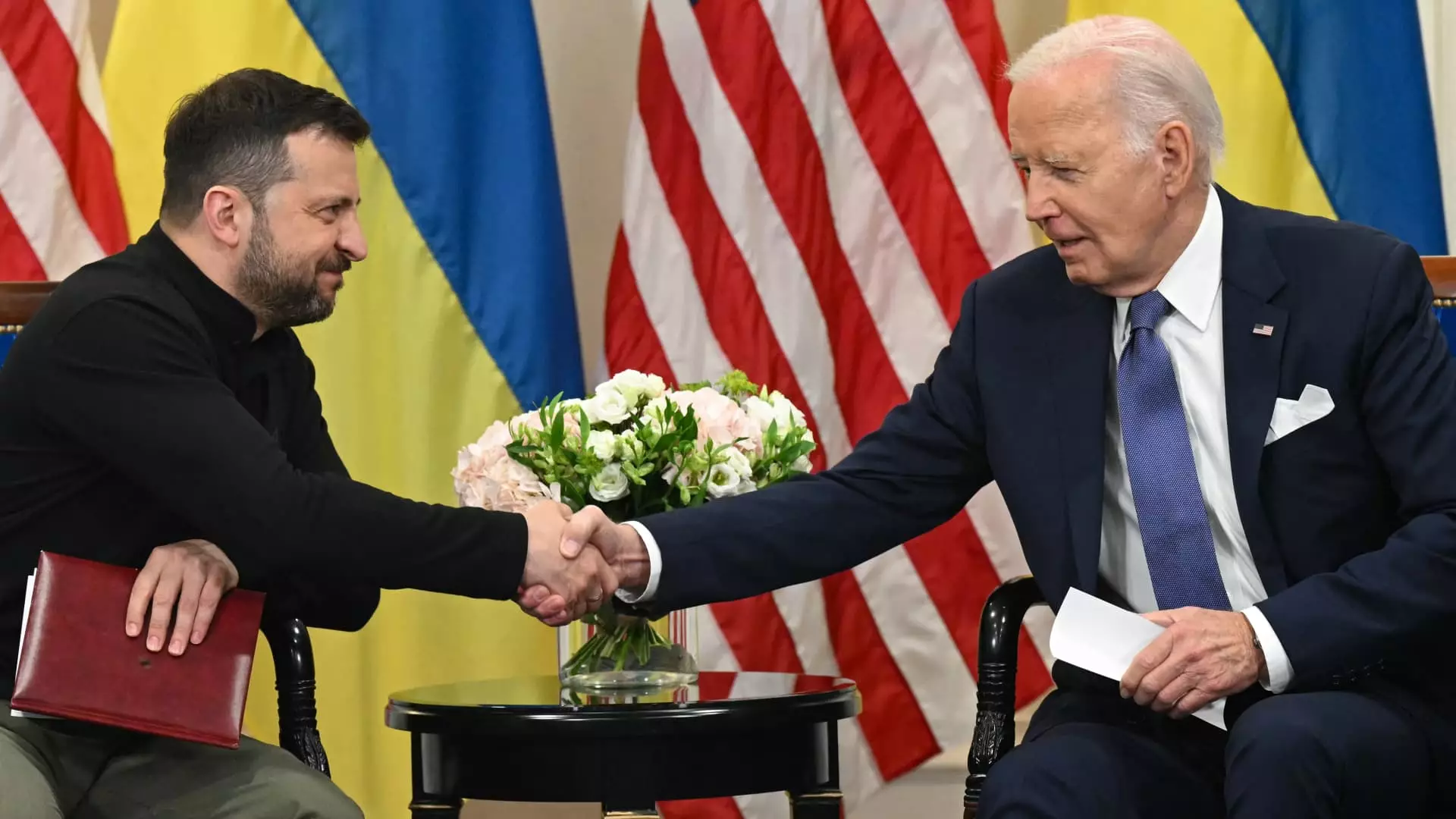On a significant Monday, just weeks before the transition of power from President Joe Biden to President-elect Donald Trump, the United States made headlines by announcing nearly $6 billion in additional military and budget assistance for Ukraine. This decision underscores a deep commitment to bolstering Ukraine’s defense capabilities in light of escalating Russian aggression. Biden, who has articulated a relentless commitment to supporting Ukraine through the remainder of his presidency, delineated a comprehensive package that includes substantial military aid, reinforcing the belief that an empowered Ukraine is crucial for the stability of Europe and the preservation of democratic values.
The military assistance stands at $2.5 billion, a strategic move aimed at enhancing Ukraine’s defense readiness during a critical juncture in the conflict. This aid package comprises $1.25 billion sourced directly from U.S. military stockpiles, alongside a $1.22 billion Ukraine Security Assistance Initiative (USAI) package. The latter represents a shift towards a longer-term procurement approach, emphasizing a systematic provision of military equipment, even if immediate availability may lag due to the reliance on the defense industry for resources.
Accompanying the military aid is an impressive $3.4 billion in budget support, a testament to the U.S. commitment to maintain Ukraine’s governance structure during these tumultuous times. As articulated by Treasury Secretary Janet Yellen, this funding will ensure that critical public services can continue uninterrupted, thereby stabilizing the war-torn nation. This budgetary assistance is vital, especially in the context of sustaining public sector operations and ensuring the continued payment of salaries for state employees like teachers.
Cumulatively, this measure brings U.S. budget assistance to Ukraine to over $30 billion since the onset of the war in February 2022. Such a figure demonstrates not only the severity of the situation but also highlights America’s strategic interest in fostering a strong Ukrainian government capable of resisting foreign aggression. However, constant re-evaluation of this financial support is essential, particularly as political dynamics shift in Washington.
The imminent transition to a new administration raises concerns about the future trajectory of U.S. support for Ukraine. Trump’s previous comments on re-evaluating American involvement and urging European allies to shoulder more financial responsibility signal a potential shift that could dramatically alter the landscape of aid. As we witness the Republican Party regain control of both Houses of Congress, it is evident that there are varied opinions regarding the extent of support for Ukraine. Some factions argue for a more isolationist approach, potentially jeopardizing existing commitments.
Despite these political uncertainties, Biden’s assertion that the new assistance will provide vital capabilities for Ukraine on the battlefield indicates his administration’s prioritization of Ukraine’s sovereignty and defense needs. U.S. officials assert that this assistance is timely, promising immediate and long-term capabilities that could prove critical in the upcoming winter months when military operations typically face increased challenges.
Strategically, the decision to continue robust support for Ukraine not only aids one nation but sends a strong message regarding U.S. foreign policy objectives in an era characterized by rising authoritarianism. The deployment of North Korean troops by Russia signifies a troubling escalation in the conflict and showcases the international implications of the war. Such developments only reinforce the necessity for the U.S. to maintain a strong stance against aggressive militarism.
Washington’s commitment to supporting Ukraine aligns with broader national security interests. As Yellen underscored, Ukraine’s success is inextricably linked to America’s core national interest. The U.S. must prioritize a response to Russian aggression, signaling to both allies and adversaries that democratic values will prevail.
As the political landscape shifts, the need for strategic consistency in U.S. foreign policy becomes increasingly apparent. Maintaining support for Ukraine is not merely about immediate military assistance or financial aid; it is about reaffirming commitment to international norms and the rule of law. Should the incoming administration succeed in recalibrating U.S. involvement, it will require a careful balancing act—one that nurtures Ukraine’s needs while addressing domestic concerns about resource allocation.
As Biden’s administration seeks to ensure that Ukraine remains fortified against aggression, the upcoming months will prove crucial in determining whether continued support will translate into lasting impacts on the geopolitical landscape or if the evolution of U.S. policy will lead to a new chapter in the ongoing saga of war in Ukraine.

Leave a Reply